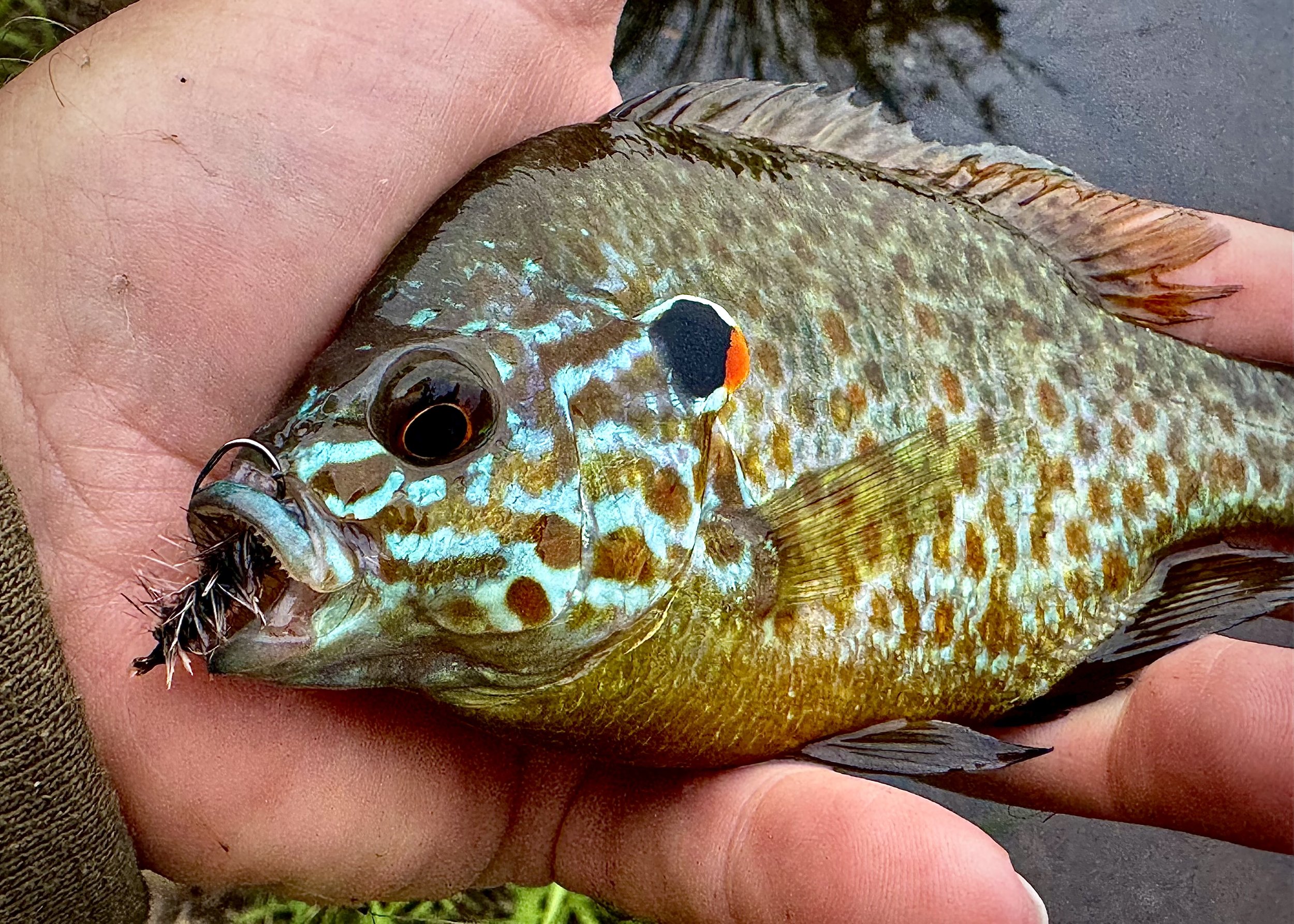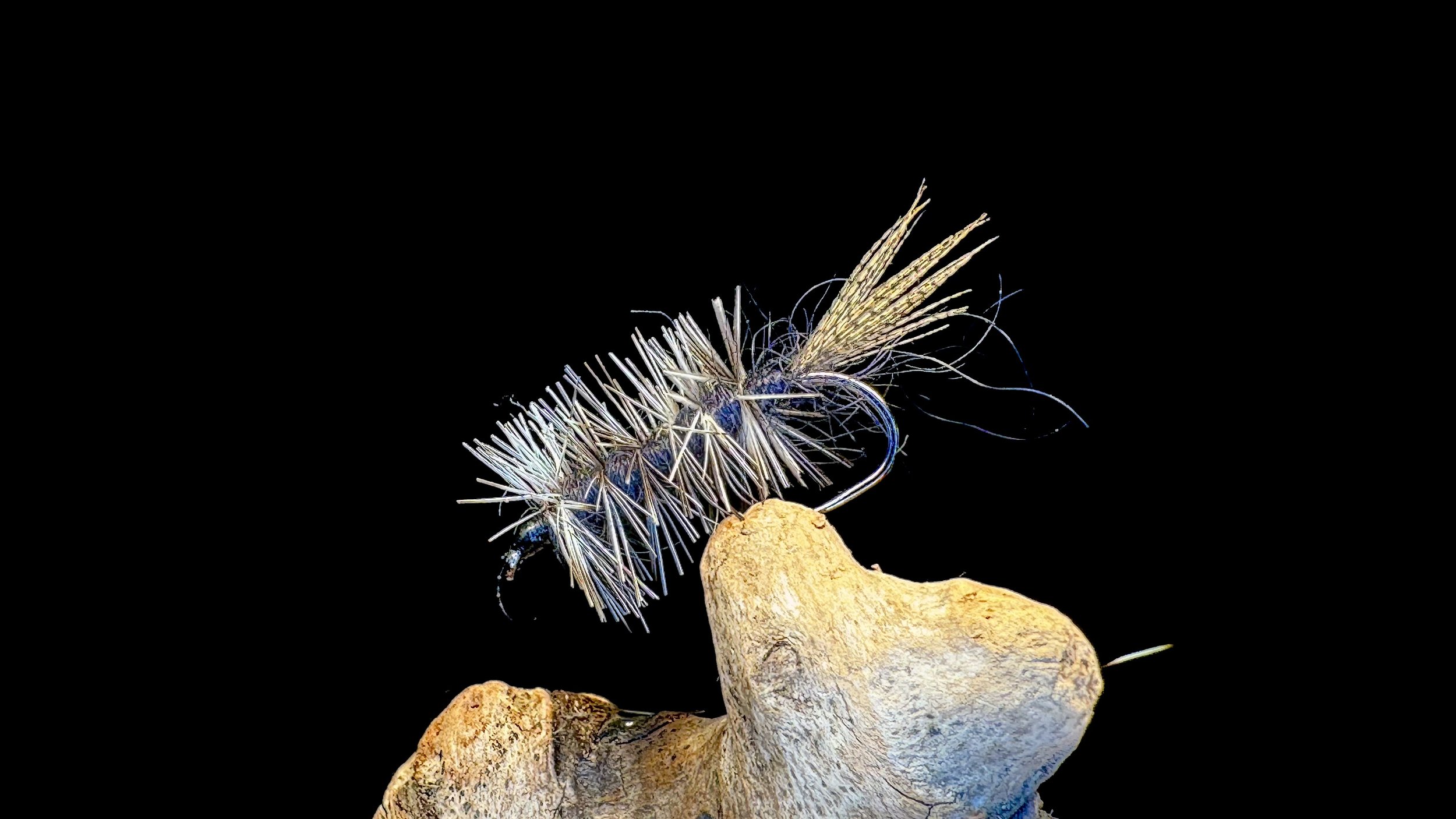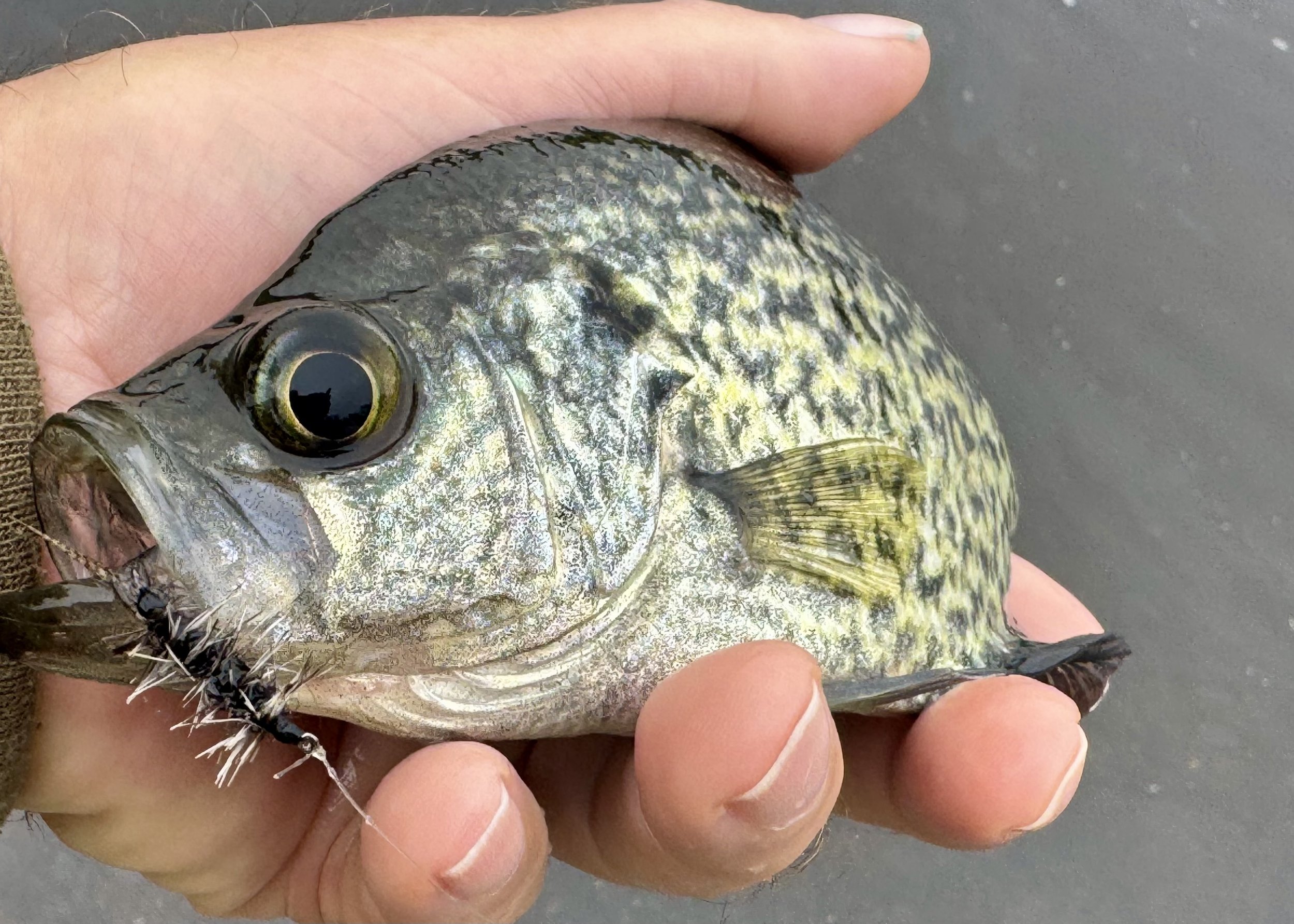Chuck Kraft’s “wonder” nymph is just at home on a trout stream as on a bluegill pond. It is a large, buggy general attractor style nymph that can imitate a stonefly, hellgrammite, cased caddis, large mayfly nymph, caterpillar, sunken terrestrial, small baitfish, leech, crayfish, dragonfly nymph, or any number of things that find their way into a fish’s diet.
Chuck Kraft developed the fly in 1961 and has been catching fish with it ever since. Its popularity has waned with the introduction of newer, sexier patterns, so it may not be on the radar of many anglers new to fly fishing. In addition to his fly tying, Chuck guided on the rivers of Virginia for twenty-five years. He guided now-famous anglers like Bob Clouser, Lefty Kreh, and Flip Pallot, to name a few. I had the opportunity to speak with him several times at fly fishing shows in New Jersey. To say he was confident in his flies was an understatement! Chuck developed many fly patterns, such as the popular Kreelex Streamer, a fly designed to emulate a Panther Martin spinner. However, it was the CK nymph that put him on my radar many years ago.
A black CK Nymph. For extra bugginess I brushed out the wool body.
At first glance, the CK nymph looks like a wooly worm, one of the oldest fly patterns in existence. A 1971 article in Field & Stream about this fly said that Chuck “gets burned up when people make the comparison .” Regardless of Chuck’s thoughts on the matter I see a wooly worm variation when I look at this fly. Like that early fly pattern, the CK nymph is just as deadly.
A size 12 and 10 yellow CK Nymph tied with Semperfli Dirty Bug Yarn and yellow grizzly hackle. One of my favorite colors for panfish. It is also a great trout pattern, as it likely imitates a golden stonefly
The fly is tied on a 3x long nymph/streamer hook sizes 8-14 and features a black wool body, a lemon wood duck flank feather tail, and a clipped grizzly hackle. The lemon wood duck tail and clipped hackle set it apart from a wooly worm. The fly is weighted with 025 lead wire (fifteen wraps, to be precise). In addition to black, he tied the fly in several other colors, including grey, olive, and yellow. For an extra-heavy nymph, you can add a bead. Wool is not as popular a tying material as it once was. You can substitute fine chenille or peacock herl if wool is not in your tying supplies. Semperfli’s Dirty Bug Yarn is the perfect modern alternative to the wool yarn in this pattern, and it is available in many more colors. I am also particularly fond of the peacock herl version, as that material has magical fish-attracting properties. I have been using Semperfli’s synthetic peacock herl when tying the fly for panfish, as it is virtually indestructible.
A bombproof version tied with 2mm Semperfli Synthetic PeacockHerl. This fly will stand up to dozens of fish.
One of the things I love about this pattern is that it helps me use lower quality or oversized grizzly dry fly hackle. An inexpensive webby hackle is preferred for this pattern. Since the hackle will be clipped, it is a great way to use up those larger feathers that always get left behind on all necks. Chuck is particular about the number of wraps of hackle on the body, that is, five evenly spaced wraps on the body and two in front of it as a collar.
Chuck also had an interesting spin on the use of fly-tying thread. He tied all of his flies using white thread, which is easy to see and preserves the colors of any body material used. When the fly is finished, he colors the head with a Sharpie marker in any color desired.
Fishing the fly in moving water is pretty straightforward. Cast it into riffles and runs where insects like stoneflies and hellgrammites call home. The weighted nymph tumbles along the bottom, where it is gobbled up by fish looking for an easy meal. In still water, I retrieve it with a slow hand twist or short strips.
A slow steady hand twist retrieve enticed this small crappie to hit.
Chuck passed away on March 9, 2020, but he left behind a treasure trove of effective fly patterns. He was an innovator in a now popular material called ultra suede. He would hand-cut various shapes to create his flies and sold the pre-cut tails commercially. He was also offered a variety of bug and popper bodies hand-carved out of cork. My fly boxes still contain some of his carved topwater patterns. If you want to see the man himself tie up a CK nymph, you can watch a video of Chuck tying his famous nymph on YouTube.




